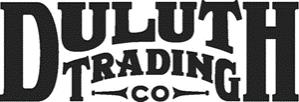Forward-Looking Statements
This press release includes “forward-looking statements” within the meaning of the Private Securities Litigation Reform Act of 1995. All statements, other than statements of historical facts included in this press release, including statements concerning Duluth Trading’s plans, objectives, goals, beliefs, business strategies, future events, business conditions, its results of operations, financial position and its business outlook, business trends and certain other information herein, including statements under the heading “Updated Fiscal 2024 Outlook” are forward-looking statements. You can identify forward-looking statements by the use of words such as “may,” ”might,” “will,” “should,” “expect,” “plan,” “anticipate,” “could,” “believe,” “estimate,” “project,” “target,” “predict,” “intend,” “future,” “budget,” “goals,” “potential,” “continue,” “design,” “objective,” “forecasted,” “would” and other similar expressions. The forward-looking statements are not historical facts, and are based upon Duluth Trading’s current expectations, beliefs, estimates, and projections, and various assumptions, many of which, by their nature, are inherently uncertain and beyond Duluth Trading’s control. Duluth Trading’s expectations, beliefs and projections are expressed in good faith, and Duluth Trading believes there is a reasonable basis for them. However, there can be no assurance that management’s expectations, beliefs, estimates, and projections will be achieved and actual results may vary materially from what is expressed in or indicated by the forward-looking statements. Forward-looking statements are subject to risks and uncertainties that could cause actual performance or results to differ materially from those expressed in the forward-looking statements, including, among others, the risks, uncertainties, and factors set forth under Part 1, Item 1A “Risk Factors” in the Company’s Annual Report on Form 10-K filed with the SEC on March 22, 2024 and other factors as may be periodically described in Duluth Trading’s subsequent filings with the SEC. These risks and uncertainties include, but are not limited to, the following: the impact of inflation and measures to control inflation on our results of operations; the prolonged effects of economic uncertainties on store and website traffic and disruptions to our distribution network, supply chains and operations; our ability to maintain and enhance a strong brand and sub-brand image; adapting to declines in consumer confidence, inflation and decreases in consumer spending; disruptions in our e-commerce platform; effectively adapting to new challenges associated with our expansion into new geographic markets; our ability to meet customer delivery time expectations; natural disasters, unusually adverse weather conditions, boycotts, prolonged public health crises, epidemics or pandemics and unanticipated events; generating adequate cash from our existing stores and direct sales to support our growth; the impact of changes in corporate tax regulations and sales tax; identifying and responding to new and changing customer preferences; the success of the locations in which our stores are located; effectively relying on sources for merchandise located in foreign markets; transportation delays and interruptions, including port congestion; inability to timely and effectively obtain shipments of products from our suppliers and deliver merchandise to our customers; the inability to maintain the performance of a maturing store portfolio; our inability to deploy marketing tactics to strengthen brand awareness and attract new customers in a cost effective manner; our ability to successfully open new stores; competing effectively in an environment of intense competition; our ability to adapt to significant changes in sales due to the seasonality of our business; price reductions or inventory shortages resulting from failure to purchase the appropriate amount of inventory in advance of the season in which it will be sold; the potential for further increases in price and availability of raw materials; our dependence on third-party vendors to provide us with sufficient quantities of merchandise at acceptable prices; the susceptibility of the price and availability of our merchandise to international trade conditions; failure of our vendors and their manufacturing sources to use acceptable labor or other practices; our dependence upon key executive management or our inability to hire or retain the talent required for our business; increases in costs of fuel or other energy, transportation or utility costs and in the costs of labor and employment; failure of our information technology systems to support our current and growing business, before and after our planned upgrades; disruptions in our supply chain and fulfillment centers; our inability to protect our trademarks or other intellectual property rights; infringement on the intellectual property of third parties; acts of war, terrorism or civil unrest; the impact of governmental laws and regulations and the outcomes of legal proceedings; changes in U.S. and non-U.S. laws affecting the importation and taxation of goods, including imposition of unilateral tariffs on imported goods;
4

